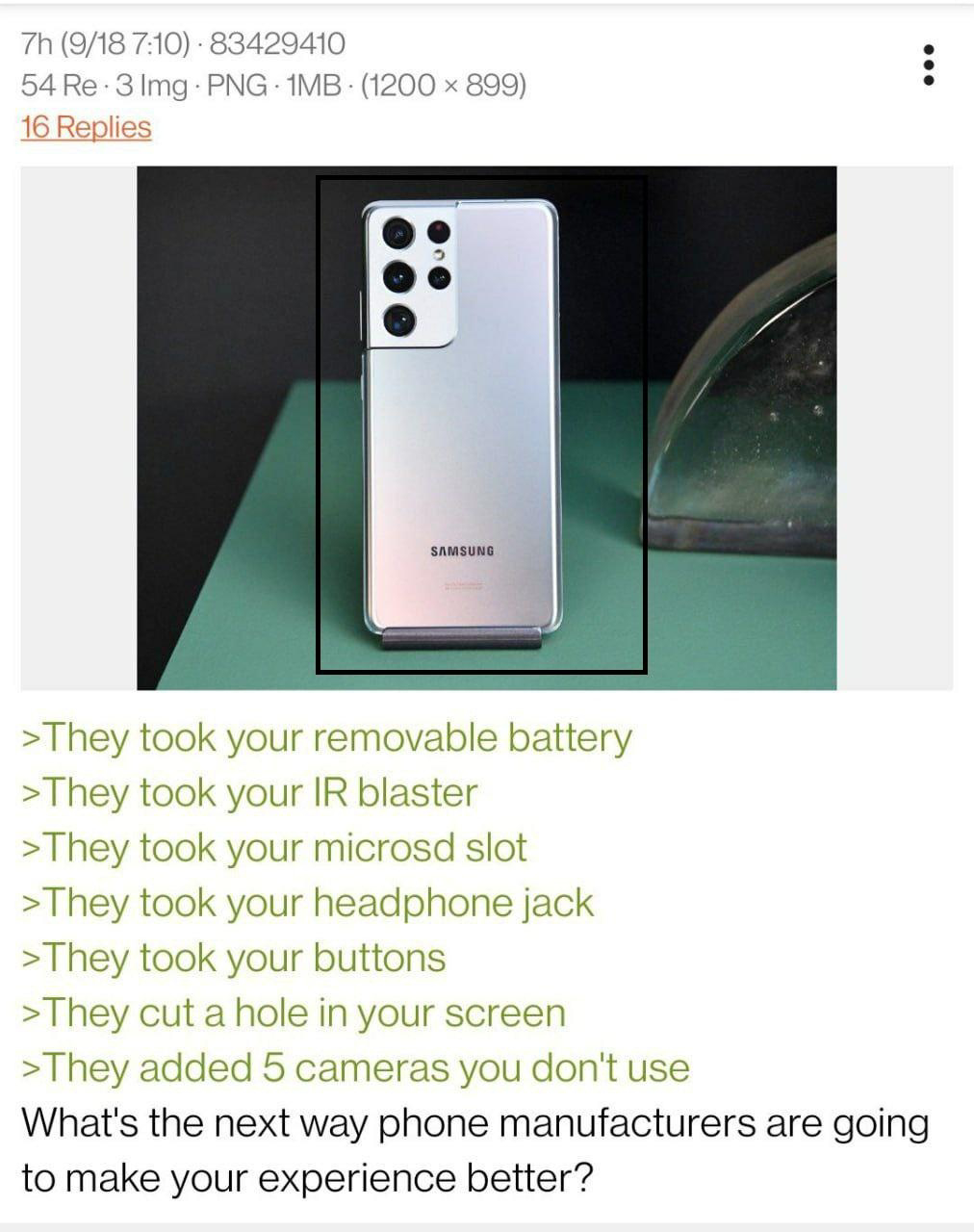this post was submitted on 14 Jan 2024
1433 points (97.3% liked)
Greentext
4454 readers
1536 users here now
This is a place to share greentexts and witness the confounding life of Anon. If you're new to the Greentext community, think of it as a sort of zoo with Anon as the main attraction.
Be warned:
- Anon is often crazy.
- Anon is often depressed.
- Anon frequently shares thoughts that are immature, offensive, or incomprehensible.
If you find yourself getting angry (or god forbid, agreeing) with something Anon has said, you might be doing it wrong.
founded 1 year ago
MODERATORS
you are viewing a single comment's thread
view the rest of the comments
view the rest of the comments

Smaller sensors pick up less and less light, forcing to bump iso. Limiting low light photography or dealing with very grainy low contrast images. Higher megapixel sensors exacerbate the problem because smaller pixels get less area of light
which would be why i would argue to just min max on the one camera. Overall a better camera, maybe not as versatile, but meh.
I think it's a size constraint. Bigger sensors also require larger lenses. In regular DSLR world a micro four thirds sensor, the sensor size is half the size of a traditional full frame sensor. The lenses are also half the size of a fullframe camera's lenses and require far less glass and weight.
We can fit 3 smaller sensors with three smaller lenses in a smartphone. Trying to make any of those sensors bigger will require more space than a phone can provide.
Because we have to have smaller sensors, digital zoom reduces fidelity of images. Having multiple lenses optimized for various focal points mitigated this issue
I'm no expert just a hobbyist take my word with a grain of salt lol